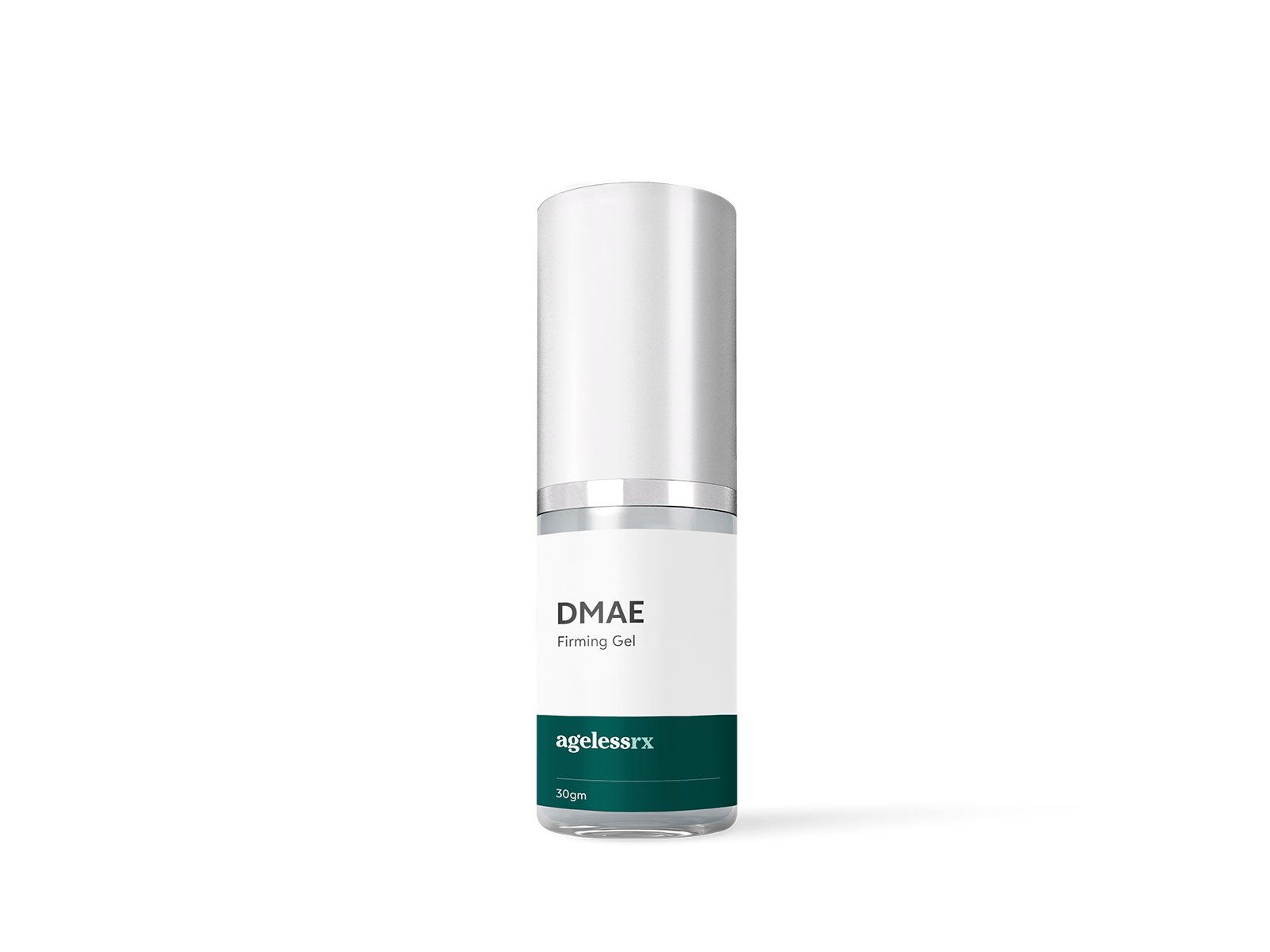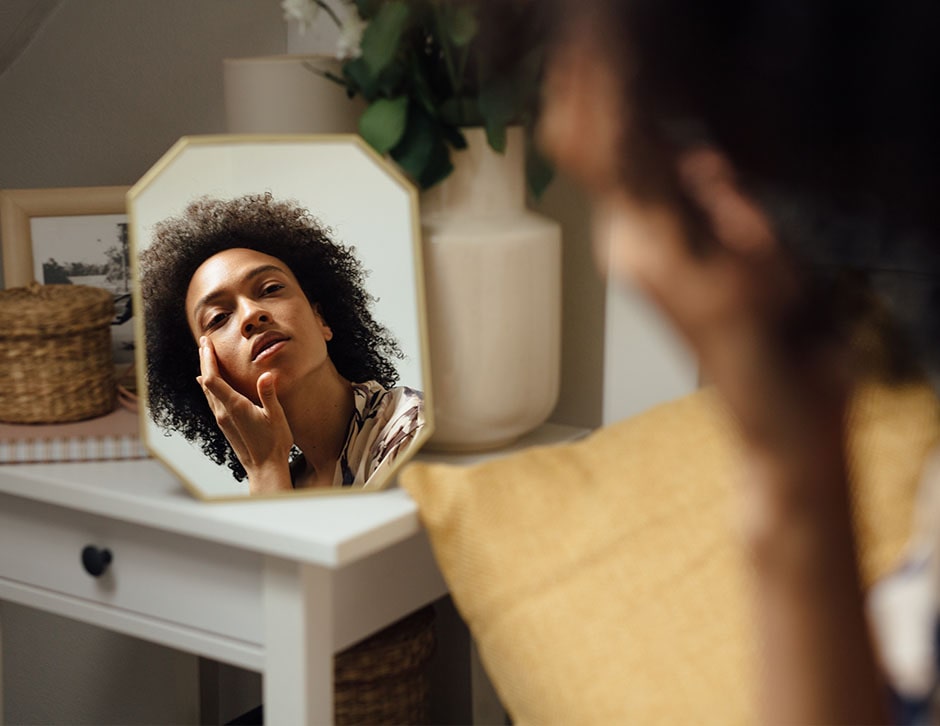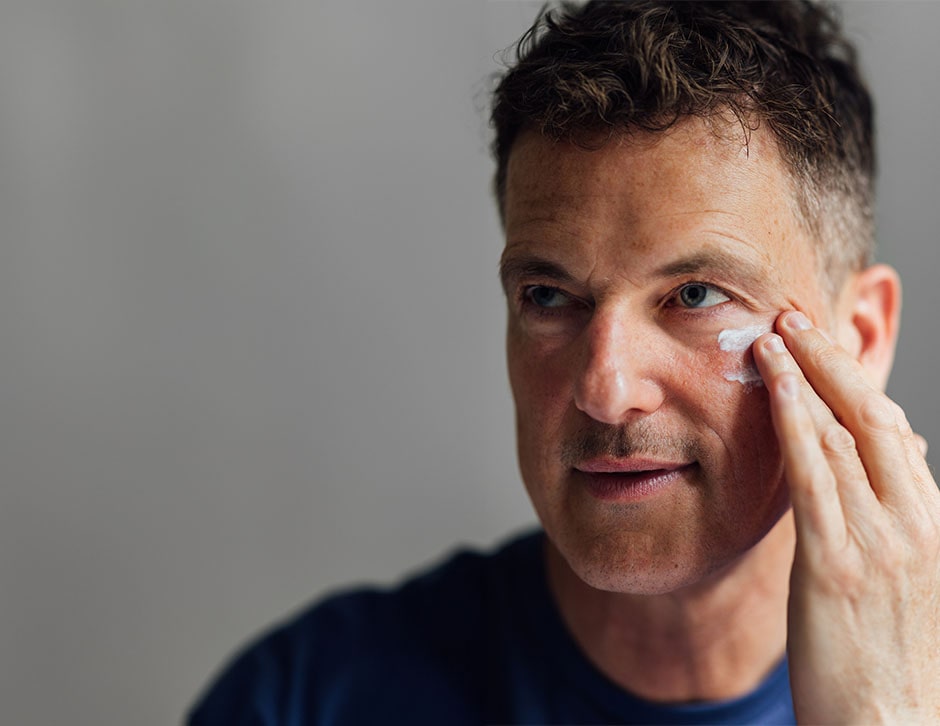DMAE Product Guide
DMAE is a peptide that’s been shown to tighten and firm facial and neck skin. DMAE has also been shown to increase dermal
(skin) thickness while also hydrating better than OTC moisturizing products.
DMAE is considered safe for everyday use and well tolerated for improving age-related skin concerns like sagging, dark under-eye circles, forehead lines and crow’s feet. In addition, it’s been shown to improve lip shape and fullness.
Getting started
It’s recommended you start out using DMAE Firming Gel once every 2-3 days while your skin builds up a tolerance to it. If your skin tolerates the gel well, you can increase to twice daily use within 7-14 days, depending on your comfort level.
Moisten your skin and apply 2 pumps to your face twice daily (once in the AM, once in the PM). Spread a thin, even layer over the face and neck and gently smooth into your skin. Allow the gel to completely absorb before continuing with any other serums, treatments, or moisturizers of choice. Apply a daily SPF 30+.
Important safety information

Do not use DMAE if you are pregnant or breastfeeding (including trying to get pregnant or are unsure whether you are pregnant). DMAE has been associated with miscarriage and birth defects. Additionally, people with an allergy to DMAE, or any of its ingredients, should not take
Hydroquinone.
Store your DMAE at room temperature, away from heat, moisture, and direct light. Keep from freezing. Keep away from children and pets.
Possible side effects
As with any prescription product, there may be side effects. Generally, the vast majority of side effects will subside after the gradual use of the product over 3-4 weeks. If serious burning or irritation occurs, discontinue use and consult a doctor.
As you start to use DMAE, you may experience: itching, burning, tingling, redness, or peeling. Visit our website for a complete list of possible side effects.
Make sure to use a daily moisturizer with SPF daily (30 or higher).
For other important safety information, please visit: agelessrx.com/dmae
Possible drug interactions
Before starting any new prescription, be sure to tell your doctor or healthcare provider about all the medications you take, including prescription and over-the-counter medications, vitamins, and herbal supplements.
You should not use topical DMAE if you take any of the following medications: acetylcholinesterase inhibitors (i.e. Aricept, Cognex, Reminyl), anticholinergic medications (used for Parkinson’s Disease, COPD, and overactive bladder), cholinergic medications (used for Alzheimer’s and glaucoma), anticoagulants (i.e. blood thinners).
Additionally, using DMAE concurrently with topical drying agents, such as salicylic acid and benzoyl peroxide, can increase drying effects. Do not apply these agents to the same areas as your topical DMAE.
FAQs
When will I start to see results?
When used as directed, many patients see results within just a few weeks of treatment. Significant overall skin tone improvement should be visible in 16 weeks.
Do I have to use sunscreen with DMAE?
Yes. It is essential that you use a daily sunscreen (no less than 30 SPF) on any area you’re treating with topical DMAE (i.e. face and neck). This is because the cream makes your skin more sensitive to UV/UVB rays.
What can I do to increase the benefits of DMAE?
It’s best to use this product in combination with antioxidant and vitamin-rich moisturizers, serums or other treatments (i.e. Vitamin A, E, and C or alpha-lipoic acid) to enhance its effectiveness.
Where and how should I store my DMAE?
Store in a cool, dry place below 27 degrees C (80 degrees F). Do not freeze. Protect from light. Throw away any unused medicine after the expiration date. Keep out of the reach of children.
Additional resources
-

Is DMAE Safe for Skincare?
Some trials question whether DMAE is safe, but the evidence says otherwise. Explore the expert analysis by our Chief Medical Officer, Dr. Z.
-

AgelessRx Webinar Recap: An Introduction to Aging Skin
We’ve got another webinar recap from all about our innovative work with skin health as it relates to aging and longevity treatment.
-

Caring for The Skin on Your Neck
Signs of aging skin on your neck usually happen sooner than on other areas on your face. Learn how care for the skin on your neck.
